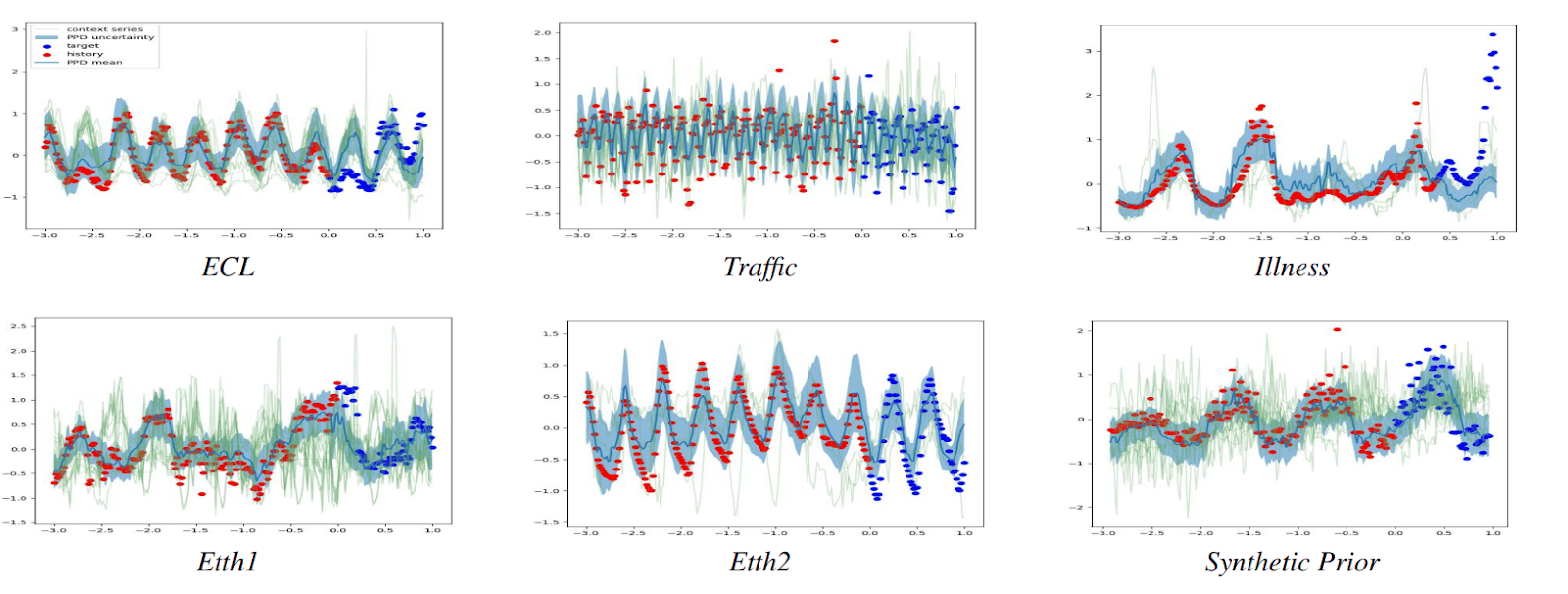The official repository of LatentTimePFN (LaT-PFN) available as preprint on Arxiv
This work introduces LaT-PFN, a novel time series model that combines PFN and JEPA frameworks to generate zero-shot forecasts efficiently, using a versatile latent space that enables adaptable time granularity and superior predictive performance.
See also our blogpost with some practical examples
We introduce LatentTimePFN (LaT-PFN), a foundational Time Series model with a strong embedding
space that enables zero-shot forecasting. To achieve this, we perform in-context learning in
latent space utilizing a novel integration of the Prior-data Fitted Networks (PFN) and Joint
Embedding Predictive Architecture (JEPA) frameworks. We leverage the JEPA framework to create
a prediction-optimized latent representation of the underlying stochastic process that generates
time series and combines it with contextual learning, using a PFN. Furthermore, we improve on
preceding works by utilizing related time series as a context and introducing an normalized
abstract time axis. This reduces training time and increases the versatility of the model by
allowing any time granularity and forecast horizon. We show that this results in superior
zero-shot predictions compared to established baselines. We also demonstrate our latent space
produces informative embeddings of both individual time steps and fixed-length summaries of
entire series. Finally, we observe the emergence of multi-step patch embeddings without explicit
training, suggesting the model actively learns discrete tokens that encode local structures
in the data, analogous to vision transformers.
This repository uses Python 3.10. Please ensure you have the correct version installed.
To install the required packages, first create and activate a virtual environment:
python -m venv venv
source venv/bin/activateThen install the requirements file:
pip install -r requirements.txtWe have provided a copy of our real datasets for evaluation. The zip file is named:
datasets.tar.gz
After unzipping it, please ensure you place the resulting datasets folder in the root of the repository.
tar -xvf datasets.tar.gzNOTE: This model requires a machine with GPU for training.
Download trained model weights here
We have trained LaT-PFN on a single NVIDIA A10G Tensor Core GPU, for 24 hours.
To train the model, run:
python train.pyThe config.py file contains the hyperparameters used for training. Note some seeds can have different effects on the final model stability.
To evaluate the model, run:
python -m evaluation.run_evalsThe details of the contexts and held-out series are in the evaluation/real_evals.py file.
Please note that these contexts have been curated for optimal performance, changing them may result in suboptimal performance. Similarly the normalization functions used to map both the time and value axis to their respective normalized spaces have also been selected for optimal performance. Once again, changing these may result in suboptimal performance.
Our model implements two functions for inference:
create_forecastcreate_embeddings
See examples in example.ipynb for how to use these functions
To maximise the forecasting performance of the model, please consider dedicating some time to curating your contexts and normalisation functions.
To tune the model, run:
python tune.pyTo change the parameters to tune, please modify the objective function in tune.py.
Multiple tuning process can work together by all referencing the STUDY_NAME
Please include to the following reference when using or building upon this work:
@article{verdenius2024lat,
title={LaT-PFN: A Joint Embedding Predictive Architecture for In-context Time-series Forecasting},
author={Verdenius, Stijn and Zerio, Andrea and Wang, Roy LM},
journal={arXiv preprint arXiv:2405.10093},
year={2024}
}See the website of WAIR AI for automated retail forecasting solutions
